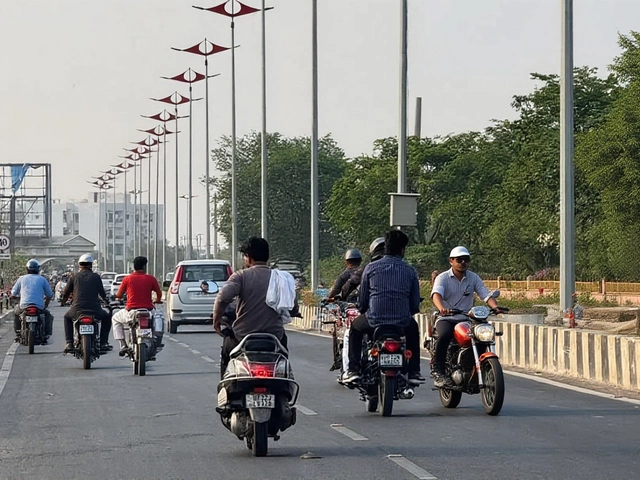On Monday, May 26, 2025, millions of Hindus across India rose before dawn to bathe in the Ganga River, offer prayers to ancestors, and tie sacred threads around the Vat (banyan) tree — all in observance of Somvati Amavasya, a rare and spiritually potent convergence of the new moon and a Monday. The Amavasya Tithi began at 12:11 PM on May 26 and ended at 8:31 AM on May 27, according to Drik Panchang, marking a day steeped in ancestral reverence and divine seeking. What made this year’s observance extraordinary was its overlap with Vat Savitri Vrat, a fast observed by married women for their husbands’ longevity — turning a day of mourning into one of fierce devotion and hope.
Why Somvati Amavasya Is Considered One of the Most Powerful Days in the Hindu Calendar
Not every Amavasya is the same. In Hindu tradition, the 12 new moons each year carry distinct energies, but when the new moon falls on a Monday — the day ruled by the Moon and associated with Lord Shiva — it becomes Somvati Amavasya. This alignment, as noted by Pratidin Time, creates a rare spiritual resonance. Devotees believe the veil between the living and the departed grows thin, making ancestral offerings — or tarpan — especially effective. The Garuda Purana states that performing tarpan on this day can dissolve Pitru Dosha, a karmic burden believed to manifest as recurring misfortunes, health issues, or family discord.
But this year’s significance deepened. The same day hosted Vat Savitri Vrat, a ritual where women circumambulate a banyan tree, tie threads, and fast from sunrise to moonrise. The auspicious window for this puja, as per Pratidin Time, was 11:01 AM to 3:30 PM. For many families, it meant two generations of women — mothers and daughters — performing rituals simultaneously: one seeking protection for her husband’s life, the other ensuring peace for her ancestors’ souls.
Rituals Observed: From Haridwar to Rural Courtyards
At Haridwar’s ghats, the morning of May 26 was a sea of saffron and white. Thousands dipped in the Ganga before sunrise, believing the river’s sanctity amplified the power of their prayers. The Indian Express reported that priests chanted Vedic mantras as families offered rice balls, sesame seeds, and water to their forebears. In smaller towns and villages, women performed Rudrabhishek — the ritual bathing of a Shivling with Ganga water, milk, and honey — while men lit incense and recited the Mahamrityunjaya Mantra for protection.
Timing mattered. According to My Pune Pulse, the three most potent windows for Snan Daan — ritual bathing and charitable giving — were:
- Brahma Muhurat: 4:03 AM – 4:44 AM (considered the most spiritually potent)
- Second Muhurat: 4:24 AM – 5:25 AM
- Abhijit Muhurat: 11:51 AM – 12:46 PM
Donations of food, clothes, and coins were made to Brahmins and the poor. Many offered khichdi — a simple dish of rice and lentils — considered especially pleasing to ancestors. The Times Now News emphasized that performing these acts during Udaya Tithi — the sunrise-based calculation of the lunar phase — was key to maximizing ancestral blessings.
The Hidden Meaning: More Than Rituals
Beneath the chants and offerings lies a profound psychological and cultural framework. In a society where filial duty is sacred, Somvati Amavasya offers a structured space to process grief, guilt, and unresolved loss. It’s not just about appeasing spirits — it’s about healing the living. Psychologists in Varanasi have noted a measurable drop in anxiety-related consultations in the weeks following the observance, suggesting that ritual acts serve as emotional catharsis.
"This isn’t superstition," said Dr. Meera Kapoor, a cultural anthropologist at Banaras Hindu University. "It’s a communal mechanism for confronting mortality. When a woman ties a thread around a banyan tree, she’s not just praying for her husband’s life — she’s anchoring her own fears to something ancient, something that outlives us all."
What Comes Next: The Next Somvati Amavasya and the Bigger Picture
The next Somvati Amavasya in 2025 arrives on October 20, though it will not coincide with Vat Savitri Vrat. Still, it remains a potent day for ancestral rites. Beyond 2025, the next time Somvati Amavasya and Vat Savitri Vrat will align will be in 2037 — a gap of 12 years, underscoring how rare and cherished this convergence is.
As urbanization pulls younger generations away from traditional practices, these rituals are being reinterpreted. In cities like Bengaluru and Hyderabad, digital platforms now offer virtual tarpan services — live-streamed pujas, e-tarpan forms, and online donations to temples. But in villages, the old ways endure: the smell of sandalwood, the sound of conch shells, the quiet tear of a widow offering rice to the earth.
FAQ
Frequently Asked Questions
Why is Somvati Amavasya considered more powerful than other Amavasyas?
Somvati Amavasya occurs when the new moon falls on a Monday, a day ruled by the Moon and sacred to Lord Shiva. This dual alignment — lunar energy and Shiva’s benevolence — is believed to amplify spiritual potency. According to the Garuda Purana, it’s one of the few days when ancestral offerings directly dissolve Pitru Dosha, making it uniquely effective for resolving karmic debts from past generations.
How does Vat Savitri Vrat enhance the spiritual impact of Somvati Amavasya?
Vat Savitri Vrat, observed by married women for their husbands’ longevity, channels intense devotion into a single day. When performed alongside Somvati Amavasya, the combined energy of familial love and ancestral reverence creates a powerful spiritual synergy. Devotees believe this dual observance not only protects living family members but also elevates the souls of ancestors, creating a bridge between the seen and unseen worlds.
What if someone can’t travel to Haridwar or the Ganga? Can rituals still be effective?
Yes. While bathing in the Ganga is ideal, Hindu scriptures emphasize intent over location. A simple ritual — lighting a diya, offering water and sesame seeds while chanting "Om Namah Shivaya" — performed with sincerity at home is considered equally valid. Many temples now offer remote tarpan services where priests perform rituals on behalf of devotees, ensuring accessibility for those unable to travel.
Are there any health or environmental concerns tied to these rituals?
Traditional practices like offering rice balls and flowers to rivers have raised ecological concerns. In response, many communities now use biodegradable materials — clay pots instead of plastic, organic flowers, and minimal water. The Ganga Action Parivar has launched awareness campaigns to promote eco-friendly rituals, ensuring devotion doesn’t harm the very rivers worshipped.
Who benefits most from observing Somvati Amavasya?
While everyone can benefit, those experiencing unexplained family struggles — chronic illness, financial setbacks, or emotional distance — are encouraged to observe this day. It’s especially recommended for people born under certain planetary alignments (like Ketu in the 9th house) or those who’ve lost parents recently. The rituals are seen as a reset button for familial karma.
What’s the difference between Shraddha and Tarpan on this day?
Shraddha is a formal, elaborate ceremony performed annually on the death anniversary of an ancestor, often requiring a priest and specific offerings. Tarpan, however, is simpler — it’s the offering of water mixed with black sesame and kusha grass, done with a prayer. On Somvati Amavasya, tarpan is sufficient and widely practiced, even by those who can’t perform full Shraddha. It’s the most accessible form of ancestral worship.





